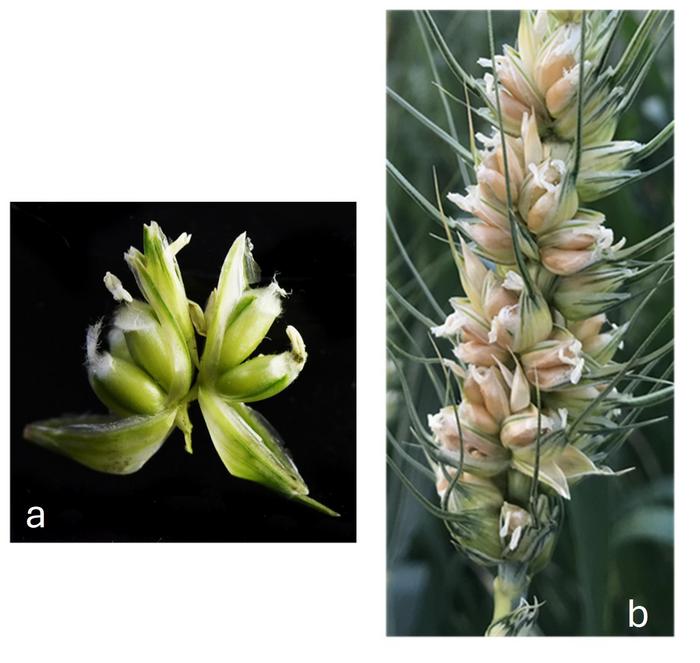University of Maryland researchers discovered the gene that makes a rare form of wheat grow three ovaries per flower instead of one. Since each ovary can potentially develop into a grain of wheat, the gene could help farmers grow much more wheat per acre.
The special trait of growing three ovaries per flower was initially discovered in a spontaneously occurring mutant of common bread wheat. But it wasn’t clear what genetic changes led to the new trait. The UMD team created a highly detailed map of the multi-ovary wheat’s DNA and compared it to regular wheat. They discovered that the normally dormant gene WUSCHEL-D1 (WUS-D1) was “switched on” in the multi-ovary wheat. When WUS-D1 is active early in flower development, it enlarges the flower-building tissues, enabling them to produce extra female parts like pistils or ovaries.
If breeders can control or mimic this genetic trick of activating WUS-D1, they could design new wheat varieties that grow more kernels per plant. Even small gains in the number of kernels per plant can translate into huge increases in food supply at the global scale.

“Pinpointing the genetic basis of this trait offers a path for breeders to incorporate it into new wheat varieties, potentially increasing the number of grains per spike and overall yield,” said Vijay Tiwari, Associate Professor of Plant Sciences and co-author of the study. “By employing a gene editing toolkit, we can now focus on further improving this trait for enhancing wheat yield. This discovery provides an exciting route to develop cost-effective hybrid wheat.”
That’s important because wheat is one of the world’s staple crops, feeding billions of people every day. As global demand for wheat continues to rise, climate change, limited farmland, and population growth make it increasingly difficult to increase production using traditional methods. This discovery could give breeders a powerful new tool to boost yields without needing more land, water, or fertilizer.
The discovery of WUS-D1 could also lead to the development of similar multi-ovary varieties of other grain crops.
Their work was published on October 14, 2025, in the journal Proceedings of the National Academy of Sciences.


:max_bytes(150000):strip_icc()/Markets-8-Soybeans-up-corn-down-10-39d51bc414e3404d8a298ad3f60968ec.jpeg)





:max_bytes(150000):strip_icc()/AJF_3019-scaled-1ade05d0d79743dab72e18aa87c15a25.jpg)
:max_bytes(150000):strip_icc()/Markets-7-Corn-up-soybeans-down-3-8a19ee3772234e24930af71711d04827.jpeg)

:max_bytes(150000):strip_icc()/IMG_2890-1536x1152-3e525ec1627340a18d71eca413e6e1d6.jpg)